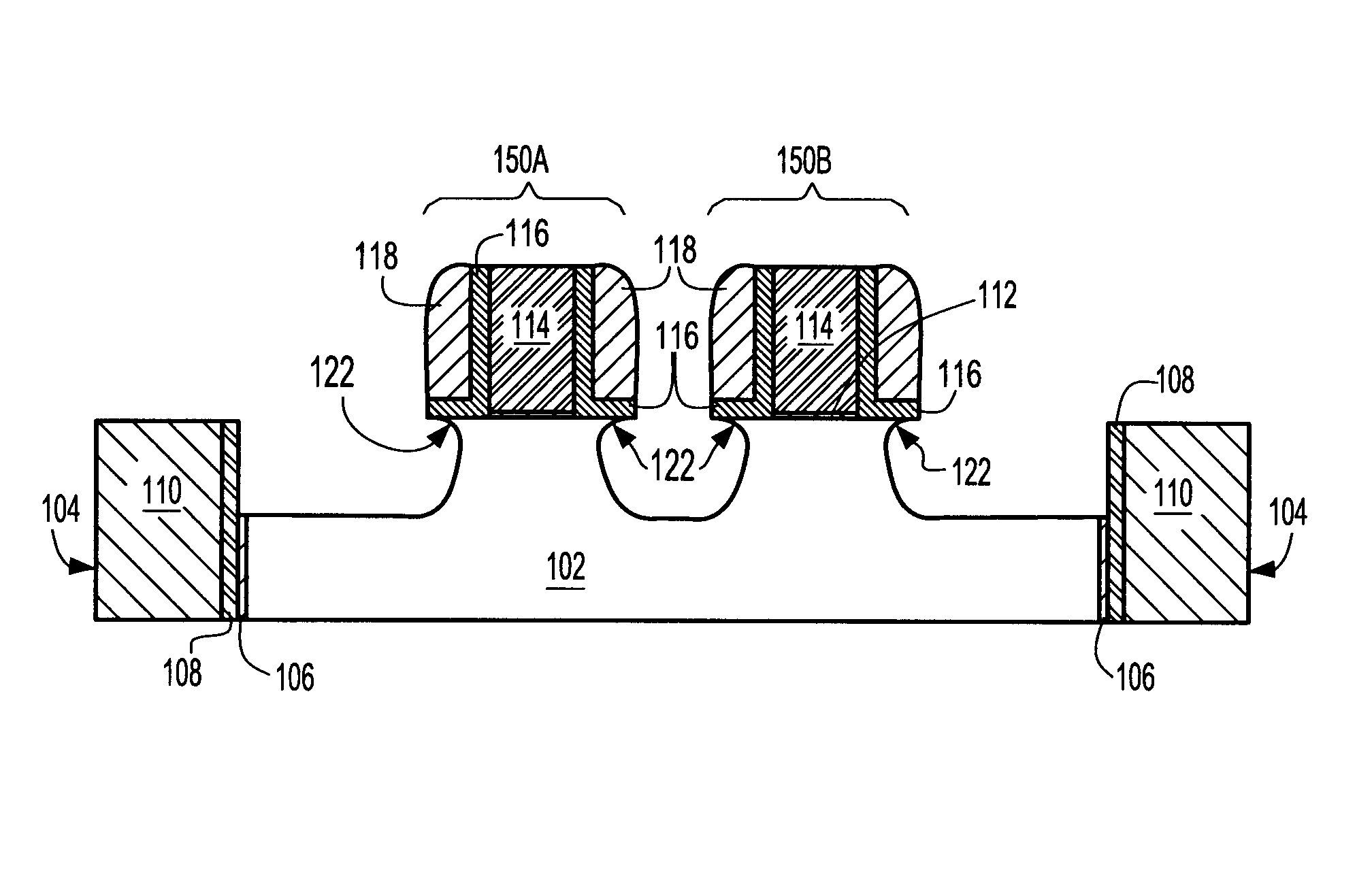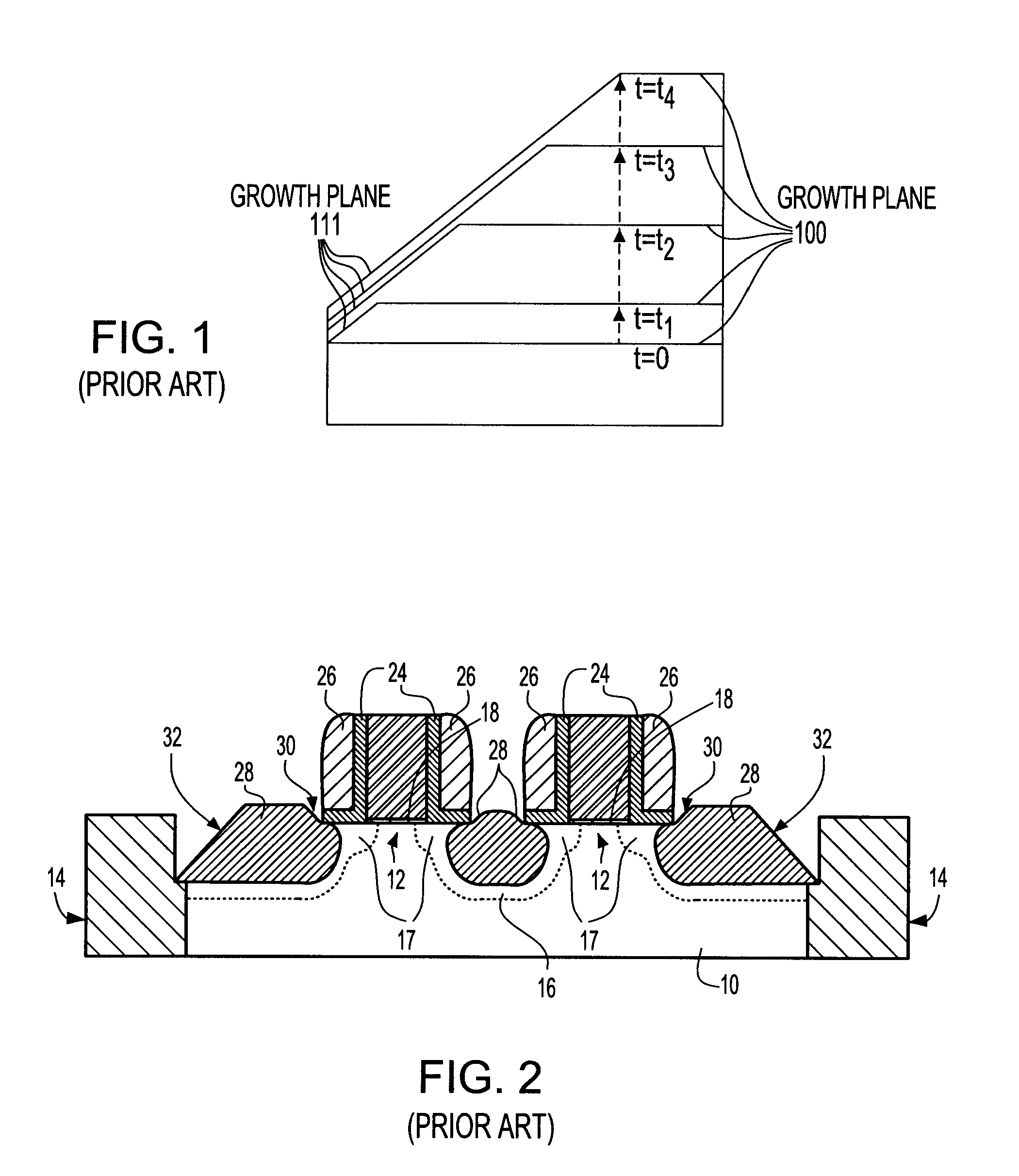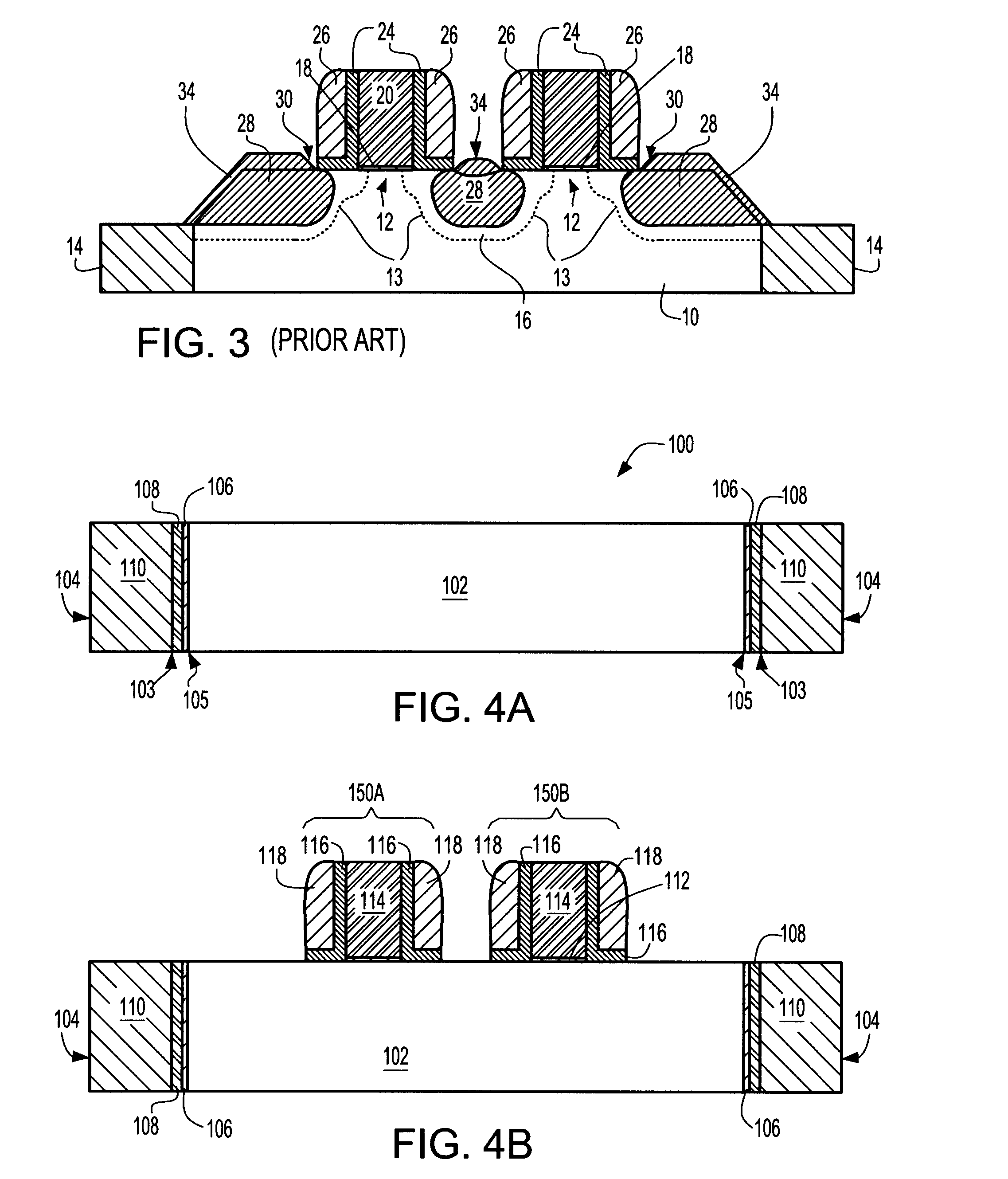STRUCTURE AND METHOD FOR IMPROVED STRESS AND YIELD IN pFETS WITH EMBEDDED SiGe SOURCE/DRAIN REGIONS
a technology of source/drain region and structure, which is applied in the direction of basic electric elements, electrical apparatus, semiconductor devices, etc., can solve the problems of difficult contact with the device, significant impediments, and silicide shorting of the source/drain to the body, and achieves a higher uniaxial stress
- Summary
- Abstract
- Description
- Claims
- Application Information
AI Technical Summary
Benefits of technology
Problems solved by technology
Method used
Image
Examples
Embodiment Construction
[0030] The present invention, which provides a structure and a method for improved stress and yield in a CMOS technology including at least one pFET, will be described in greater detail by referring to the following discussion, together with the drawings that accompany the present application. It is noted that the drawings of the present invention are provided for illustrative purposes and thus they are not drawn to scale.
[0031] Reference is first made to the initial structure 100 shown in FIG. 4A. Specifically, structure 100 includes a semiconductor substrate 102 that has at least one trench isolation region 104 embedded within the substrate. As shown, the at least one trench isolation region 104 comprises an oxide liner 106 which is in contact with the semiconductor substrate 102 and lining walls of a trench located within the semiconductor substrate 102. The at least one trench isolation region 104 also includes a nitride liner 108 on the oxide liner 106 and a trench dielectric ...
PUM
 Login to View More
Login to View More Abstract
Description
Claims
Application Information
 Login to View More
Login to View More - R&D
- Intellectual Property
- Life Sciences
- Materials
- Tech Scout
- Unparalleled Data Quality
- Higher Quality Content
- 60% Fewer Hallucinations
Browse by: Latest US Patents, China's latest patents, Technical Efficacy Thesaurus, Application Domain, Technology Topic, Popular Technical Reports.
© 2025 PatSnap. All rights reserved.Legal|Privacy policy|Modern Slavery Act Transparency Statement|Sitemap|About US| Contact US: help@patsnap.com



